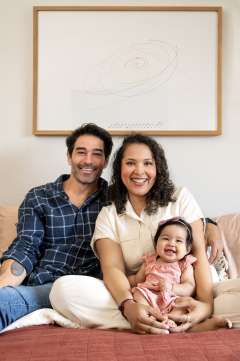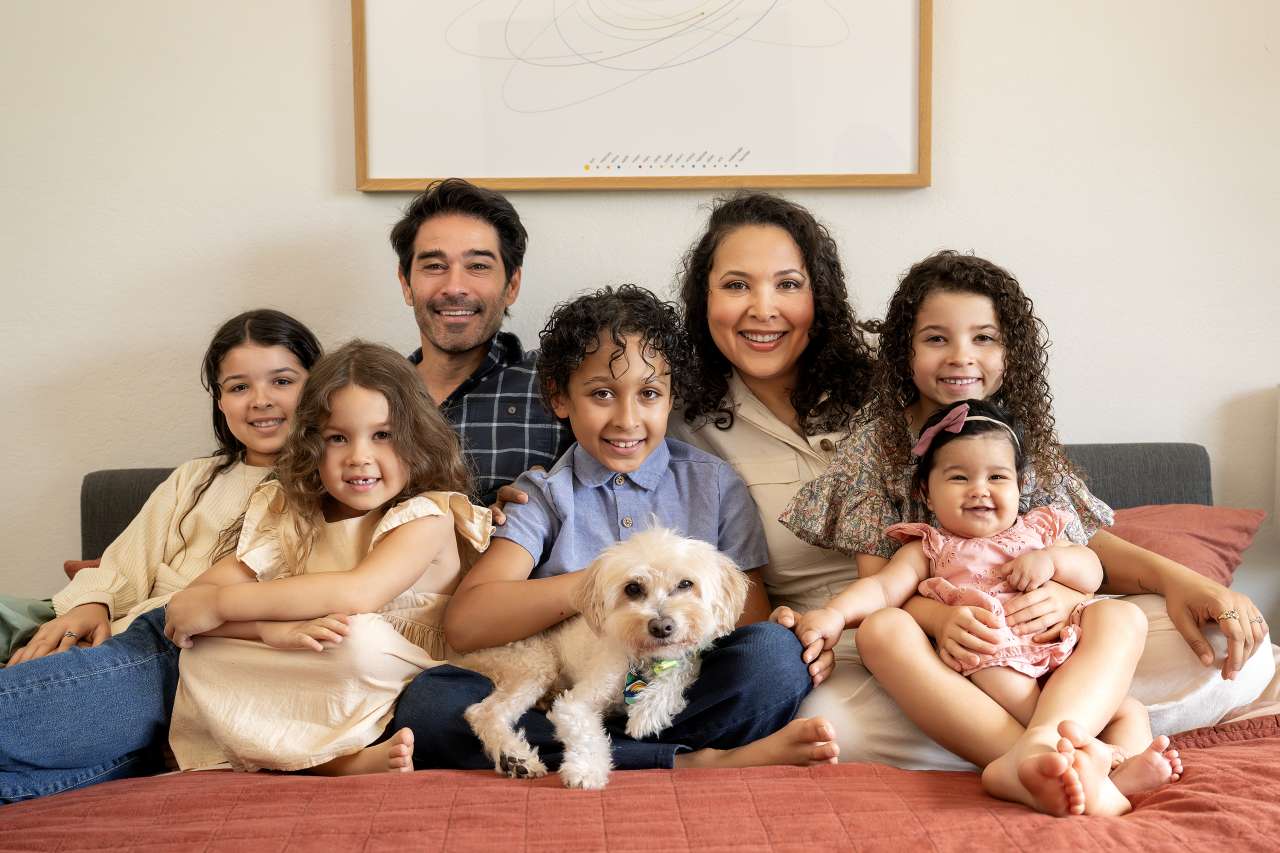Sascha Schlossberg was looking for a hospital setting to give birth to her fifth child in early 2025. Although she’d delivered her babies in a birthing center and at home, she was 41 and had two pregnancy losses, and now was considered a high-risk patient.
She didn’t want to take any chances if complications arose.
Schlossberg landed on UCLA Health, working with Dr. Kiran Kavipurapu, DO, JD, MPH (who goes by Dr. Kavi), residency program director of UCLA Obstetrics and Gynecology and assistant clinical professor at the David Geffen School of Medicine at UCLA.
“I wanted to work with a doctor where it would be a collaborative experience, and where I was going to feel fully supported," says Schlossberg. “I knew what kind of OB I wanted, and so I searched through the list of names. I Googled everybody — I wanted somebody with the right vibe.”
Dr. Kavi’s social media posts caught her attention.
His Instagram showed his awards for teaching, which Schlossberg says indicated he’s constantly learning, which was important to her. “And he also travels and has fun, which is just the sort of person that I would like to be around in general,” she says.
Patient-doctor collaboration
At Schlossberg’s first appointment with Dr. Kavi, she knew she’d made the correct choice. “My instincts were right. It was great.” She quickly learned that he, too, preferred a collaborative approach to childbirth.
“This is definitely something that I hold dear to my heart,” says Dr. Kavi. “I feel like patients come to us for a very natural process that they're trying to embrace, and sometimes our role is to really help guide them and make sure that their preferences are at the forefront of what we do.”

Dr. Kavi says he prioritizes patient’s wishes at this critical time.
“It's really not my role to dictate anything that a patient wants to do or should do with their body,” he says, “especially when it's such a vulnerable time in their life when it comes to pregnancy and childbirth. I'm a firm believer that it's about empowerment of the patient and making sure that they know everything that they should know about pregnancy and educate them about the natural processes.”
Should the pregnancy take a potentially dangerous turn, he says, “then my job is to really educate them on that and give them some options of how we can best steer the ship going forward in the best interests of both baby and mom.”
Pregnancy is often a time filled with anxiety, and Dr. Kavi sees his job as “making sure that patients are fully educated about their role, their pregnancy, the physiology of pregnancy, how it all works, and give them options on how they want to navigate forward, and partner with them and collaborate with them on their wishes, because everybody's birth story is very different.”
Maintaining a calm environment
Schlossberg had anxiety about her high-risk status, and says she appreciated Dr. Kavi’s calm manner, especially during several scary moments during her pregnancy.
When testing showed a possible genetic abnormality, Dr. Kavi and the geneticists at UCLA Health were positive and supportive of her ability to continue the pregnancy. “I felt really supported by everyone through that. The communication between everyone at UCLA was really good,” she says. It turned out there were no abnormalities.
Then it was discovered that Schlossberg’s baby was in a breech position, meaning the head is not down toward the birth canal.
“The baby was sideways,” says Schlossberg. “I've never experienced that, and I tend to have big babies, so Dr. Kavi gave me exercises to do, but we also had a plan in place if the baby didn't flip — he was going to do something called a manual version.”
This is a procedure in which a doctor tries to gently push a baby from a breech position to a head-down position. Fortunately, Schlossberg’s exercises worked and her baby moved into place on its own.
“But there were plans in place for everything,” she recalls, and this gave her a sense of relief and confidence. “And it was always assumed that it would turn out well.”
Toward the end of her pregnancy, Schlossberg developed a sinus infection and her blood pressure was elevated. “Without freaking me out, Dr. Kavi said, ‘Hey, just go to labor and delivery and let's have them check you out,’” she says.
It turned out Schlossberg had developed gestational hypertension and the birth had to be induced.
“Ultimately, I just wanted a successful birth,” says Schlossberg. “I wasn't somebody with a crazy birth plan. I wanted it to go smoothly, and it did.”
She gave birth to a healthy baby girl, Rhiannon Mae Schlossberg, on March 1.

Schlossberg credits the smooth experience, in part, to the entire team in the delivery room remaining calm and communicating well.
“The level of collaboration between the doctors and the team there made for a really big difference,” says Schlossberg. “It was clear that at every point of my care, people were on the same team and communicating.”
That calm state is a direct result of Dr. Kavi’s awareness of its importance during childbirth.
“I am a big proponent of that when I'm on labor and delivery,” he says.
“I tell my residents all the time that if there are a lot of exciting things happening or several challenging situations are coming up, take a deep breath and recenter yourself. If you're calm, your patients will see that in you and they won't become anxious, and they won't lose faith in the system or lose faith in you, because then that's when everything starts breaking down.”




